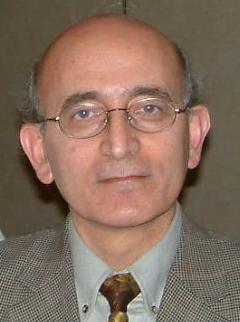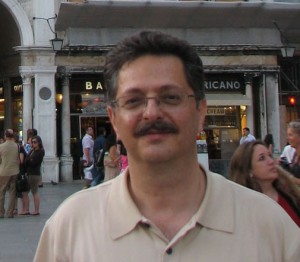Contains a brief bibliography about the guest speakers and also the reports about the particular lecture.
—————————————————————————————————————————————————————————————————————————————————————————-
Dr. Mory Ghomshei

Mory’s scientific and engineering background has helped him to introduce a new approach of understanding and interpretation of literature, on which he has published both in Persian and English. His literary contributions include a collection of mystic tales, titled “Paradise Never Lost” published and presented on theatre stages in Vancouver. In Persian, he has published on his model of “Seven Heavens of Persian Literature” and commentaries on Shabestari’s “Secret Garden”. He has also written several stories for Children including “The Tale of Norooz” published in Tehran.
Mory has been teaching Persian Literature for 20 years. He gives televised workshops and speeches on the applications of the Persian literature in modern life and post modern movement.
—————————————————————————————————————-
Mrs. Parvin Pezeshki
Mrs. Pezeshki’e Lecture Report
——————————————————————————————————————
Mr. Daniel Roehr

Daniel Roehr is a registered landscape architect in Berlin and Vancouver, a horticulturalist, and educator. In 2007 he founded the greenskins_lab under the umbrella of the Design Centre of Sustainability at UBC (www.greenskinslab.sala.ubc.ca) where his current research focuses on monitoring the holistic environmental performance of green roofs, green facades and green streets in cities. He has published refereed papers with his international team of researchers on this topic in Europe, North America and Australia. He also published articles on urban planning issues in Vancouver, education in landscape architecture and two books with his students titled “Sketching Iran” and “Sketching Italy”.
One of his main focuses in teaching at UBC is combining free hand sketching and digital media to observe, analyze and represent architecture and landscape architecture. He took students to Iran in 2007 on a sketching tour called “Sketching Iran” and to Italy in 2008 called “Sketching Italy”.
Roehr has both teaching and international practice experience, and has significant expertise in green roof and other cutting edge “green” technologies in landscape architecture. Roehr’s work over the past 15 years has spanned Great Britain, Japan, the US, Germany, Italy, Austria and China. For six years he was project architect (manager) with responsibility for the landscape implementation for the internationally recognized and award winning Potsdamer Platz project in Berlin. Through this cutting edge urban design project, he gained extensive expertise in the design and implementation of green roofs, used extensively on this project and others he designed in Germany. He run his own office in Berlin from 1999 to 2007 and is currently establishing a new office in Vancouver. In 2004 he was a cofounder of an office in Shanghai. Since that time, his work has been recognized in international publications and exhibitions. He has lectured nationally and internationally and taught studio at different universities over the past four years in Germany including the Humboldt University, Berlin and the University of Applied Science, Berlin and served as external examiner for graduation of students at the University of Applied Sciences in Berlin, the University of Hannover, and the Anhalt University of Applied Sciences in Bernburg.
Daniel Roehr qualified as a gardener at Elmwood College in Scotland before gaining a Higher Diploma in Horticulture and Landscape Technology from the Askham Bryan College of Agriculture and Horticulture in York, England in 1987 and the equivalent of a MLA from Heriot Watt University/College of Art, in Edinburgh in Scotland, in 1992.
Mr.Daniel Roehrs lecture’s report
————————————————————————————————————-
Mr. Houshang Seyhoun
Houshang Seyhoun was born on a hot summer’s day in Tehran (August 22, 1920). His family vitally involved in music and art. he lived in this atmosphere of music and art, and from an early age was encouraged to pursue his passion for drawing.
This extended to his decorating the finely crafted pillars of their home, black charcoal lines on stark white columns and walls and of course his parents encouraged him.
He completed his early education through secondary school in Tehran, and he graduated from high school and was admitted to the newly established College of fine arts at Tehran University, at the outbreak of the Second World War. The child’s passion for drawing now extended to design and architecture, and under the careful direction of his mentor and advisor in college, French scholar professor Maxime Siroux, Seyhoun blossomed in the next four years, and outstanding young talent.
Shortly after Seyhoun’s graduation, Iran Soviet Cultural Society in Tehran, which organized many cultural events, arranged for an exhibition of works by Iranian artists. Houshang’s graduation project was exhibited, and judges awarded him the insignia for arts from Iranian Ministry Of Culture and Arts-an insignia, interestingly enough, which he had himself designed something earlier during a contest at the college.
In the year following the war, Seyhoun won several additional contests and prizes for his architectural designs. One of these was his design for a monument at Tehran’s Central Railway Station. Soon after this achievement, he designed for the commemorative monument and mausoleum for Iranian philosopher and physician, Avecinna, in Hamadan.
In 1946 he left for France to advance his studies in Beaux-Arts. These were very important years for him. He studied under Professor Otello Zavaront for three years and traveled widely throughout Europe. By 1949, when he completed the course of study and received the “Docteur d’Art”.
During the next 20 years he designed mausoleums for Omar Khayam and Nader Shah, among other Iranian notables, as well as completing the main complex of Iranian National Congress, and a large educational complex in South of Tehran. Also during this period he lectured wide in Iran, Europe and North America and conducted numerous seminars and workshops.
In 1962 Seyhoun was appointed Dean of the School of Fine Arts and Architecture at Tehran University and immediately undertook major re-struction of the College. During his tenure as Dean he also become involved in civic and governmental activities, both at home and abroad and for the first time in 1968 he exhibited his abstract designs.
At this time he became member of ICOMOS, Division of UNESCO, and served as president of Iranian Architectural Organization. During this period, he was instrumental in bringing two World Architectural Congress to Iran, one in historical Isfahan and one in Persepolis (Shiraz). In 1969, he was elected a member of the City Council for Tehran for the period of four years.
In 1968, he exhibited in Tehran featured new style of abstract drawing with pen and ink. In 1972, his work was part of the large group exhibition in Amherst, Massachusetts, USA, which included the works of Salvador Dali and Pablo Picasso. Two years later, he exhibited in Paris with the publication of a book of drawing of urban and rural areas.
In 1977, Seyhoun held exclusive exhibition at Contemporary Art Gallery in Tehran, a retrospective of his work since the early days in Paris, and other exhibitions displaying water colors, pen and ink drawings, and felts. Seyhoun is noted specially for his innovative and creative architectural design. His architectural firm became the center for the original designs using stone, brick, steel and concrete in new combinations.
In three exhibitions of Seyhoun’s works, in 1977 in Tehran, were to be his last in his native country. One of these exhibitions featured his water colors, another his pen and ink drawings, and the final one his felt works.
On February 2, 1980, Seyhoun left Tehran for Paris at the invitation of French government. He remained in France until 1982, where he continued to paint and draw while holding several exhibitions.
In 1981, “Hors du temps” Museum, in the South of France, was officially opened, and one of Seyhoun’s works was hung as part of the permanent exhibition. He was also given honorary citizenship. A year later, in 1982, he immigrated to Canada, where he now resides permanently.
In 1989, he was honored by the City of Los Angeles for an exhibition of his work at the
University of Southern California.
Mr. Seyhoun’s Guest Lecture Report
———————————————————————————–
Dr. Mahmood Yahyai
Dr. Yahyai obtained his Ph. D in 1991 and joined K. N. Toosi University of Technology at the same time. He is presently Associate Professor of earthquake and structural engineering at Civil Engineering Department of the University. He has been teaching Dynamic of structure, Earthquake engineering, Theory of Elasticity and Plasticity in graduate and strength of Material Theory of structure in under graduate level. He has over 18 years of experience in design, supervision and management of important complex projects in Iran. His special interests and practical experience are in design, monitoring and maintenance of tall towers, high-rise buildings and special structures. Dr. Yahyai has been in design, construction and monitoring of the Milad Tower in Tehran, high –rise Tower in Shahihdej, Atisaz and Atishah Towers ranging from 22 to 35 storey buildings and many others complex projects.
http://sahand.kntu.ac.ir/~yahyai/
Dr-Yahyai’s-Guest-Lecture-Report


